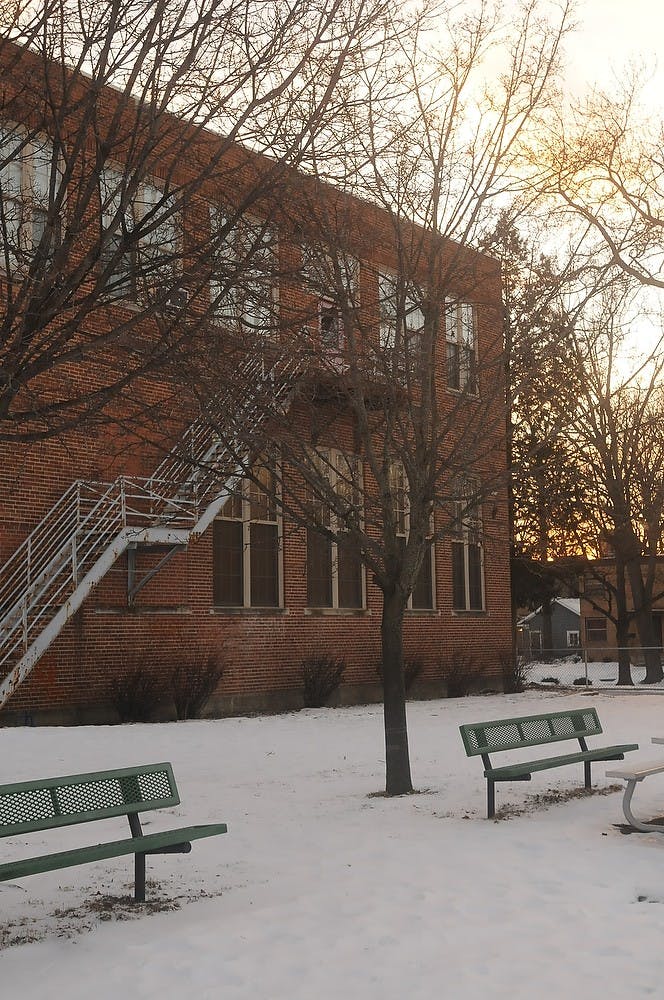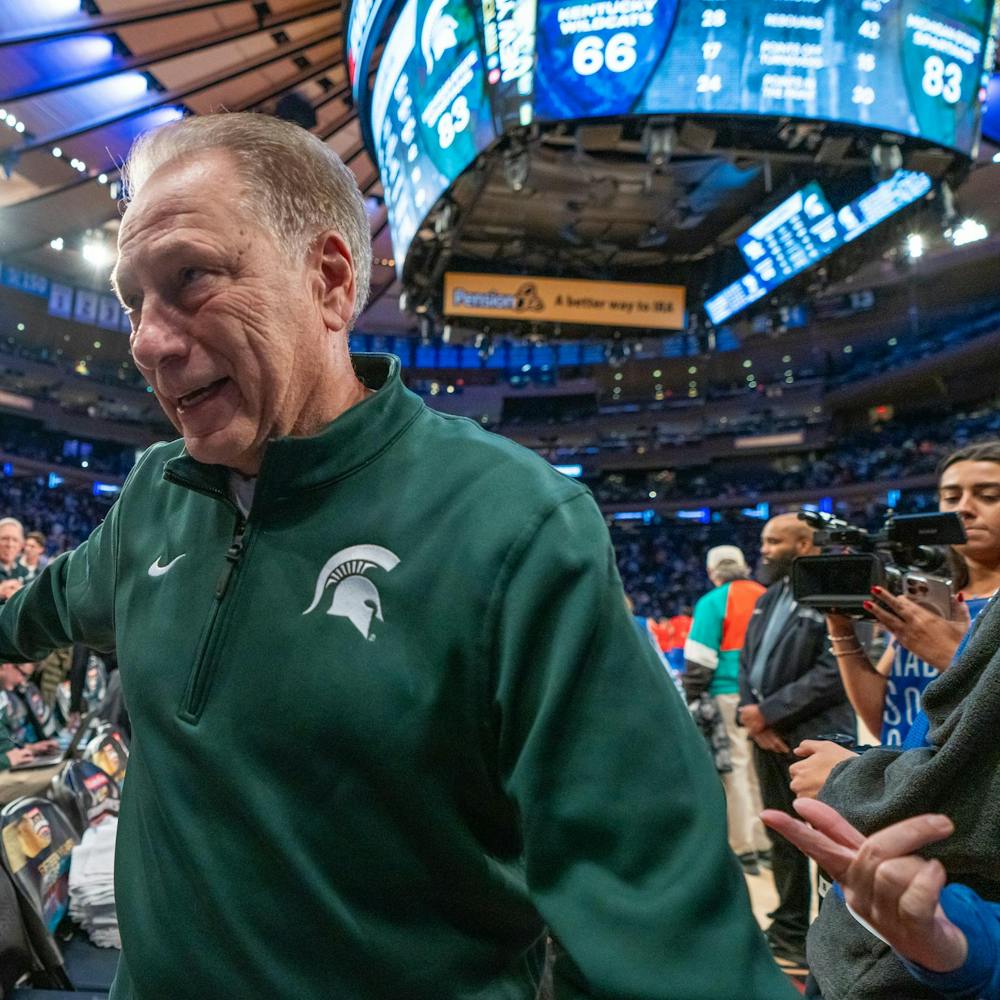"Over 75 percent of the children at Bailey have at least one parent who is a faculty, staff or student at MSU,” said Charles Hoogstraten, an MSU professor. “The closure of Bailey thus will cause great difficulty for families in the area including student parents. ... We don’t want to see this facility turn into yet another shuttered, blighted property in East Lansing.”
But the cries of protest by community members like Hoogstraten, who depended on the Bailey Community Center, are to no avail.
Following much debate and deliberation, the East Lansing City Council officially voted to close the doors of Bailey Community Center, a city staple that has served the community for nearly 100 years.
Costs and safety risks were cited as major reasons behind the decision. Citizens fought their positions passionately and organized several plans to keep the building in operation, calling the classes and child care provided by the facility a vital part of the community.
Several community members fought the closure of the Bailey Community Center and Bailey Child Care Center, staging a protest outside the East Lansing City Hall on Jan. 25.
In the end, the city could not be convinced to maintain the building. It will close to occupancy Sept. 4 of this year.
From humble beginnings
Bailey Community Center was constructed in 1922 as an East Lansing public school. The four-level building is 300,000 square feet in size and has gone under several renovations and accommodations during the time it has stood on Bailey Street. The building was named after Liberty Hyde Bailey, a leader in agrarian ideology and a 1882 graduate of the university when it was known as State Agricultural College.
In the 1980s the city of East Lansing took control of the Bailey building and allowed the Schools, Cities and Activities Program to work with East Lansing Recreations and Arts on planning activities for the department. The city officially took over all programming for Bailey Community Center in 2001 and kept virtually all existing programming exactly the same because of the large number of citizens who relied on the activities.
Tim McCaffrey, current director of Parks and Recreation for East Lansing has been with the department since 1999 and said the facility has always offered a “full menu” of programs to residents.
The most discussed aspect of Bailey Community Center is the child care program. The department of Parks, Recreations and Arts offered programs for infants and toddlers as well as before and after school schedules. The building’s central location on Bailey Street made the child care services popular among parents who were tightly involved in the East Lansing and MSU areas.
“The community-based activities and convenient East Lansing location made (Bailey) very attractive,” Councilwoman Ruth Beier said.
Although the program was popular, in 2012 the city expressed concerns with the quality of the program and the large deficit it caused in budgeting. A new program director, Nora Thompson, was brought in and improved many areas of the program.
However, the “very generous” rates of the child care program stayed in place and in 2014 the program was in a $100,000 deficit.
A baffling deficit
In September of last year, the East Lansing City Council began to discuss the serious deficits and funding budget associated with Bailey Community Center. This was the first formal discussion about ending the program McCaffrey said.
“In repairs and maintenance issues, it would cost between $400,000 and $500,000 to keep the whole building open. It is just not a priority as to where we spend limited tax dollars,”McCaffrey said.
The initial plan was to end the child care program entirely. At the time of the decision, 40 children were enrolled in the program, only 13 of which were East Lansing residents.
With the program being Bailey’s “most attractive” offering, it soon became clear that the whole facility would need to be shut down. On Jan. 20, the City Council passed a movement to close Bailey Community Center following an intense two hours of debate.
“There are quite a number of MSU students who work as teachers and aides at Bailey and will presumably be losing their jobs,” Hoogstraten said, who helped organize the proposal to keep the community center open longer.
Most scheduled classes at Bailey ended suddenly Dec. 31, 2014 after rumors of the building’s imminent shutdown became widespread. Currently, the first floor and child care wing are the only areas of the building operating. A proposal to keep the building open through June 30, 2016 that went to City Council was voted down.
A group of concerned parents helped work with city officials on plans for Bailey Community Center and worried about the future of the abandoned facility.
“They voted to create a shuttered building in our community,” said Councilwoman Beier, who also helped collaborate with a group of working parents opposed to the closing of Bailey Community Center.
The group of concerned citizens worked with city planning experts to get advice on creating a budget for a nonprofit or third-party management of the facility. Still, the costs of building maintenance and necessary repairs caused City Council and staff to deem it not worth the effort.
An analysis by the Mayotte Group Architects states that nearly $500,000 worth of repairs need to be addressed immediately, including numerous safety risks. There are no fire dampers in the gym area, as well as several exposed electrical boxes that remain a danger.
The budget shortfalls in 2015 were projected to be more than $150,000, meaning that until the building is completely closed to occupancy Sept. 4, 2015, city taxpayers will be subsidizing $3,750 per child over one year.
The end of a community staple
“(Bailey) has a long history of being a place for educating and nurturing young minds. I hope whatever it’s fate may be, that key element is not lost,” said Tom Muth, a member of the parent group. “While I’m personally affected by the closure of the daycare, if the building does not continue to be an open and welcoming public space, the long term effect will be felt by the residents of the neighborhood.”
Members of City Council understood the implications of voting to shut down Bailey Community Center, and the effect it would have on East Lansing residents. Mayor Nathan Triplett spoke up and called it a difficult decision during the meeting.
Parents and residents want to get moving on finding a new, quality child care option as quickly as possible. There is no other municipally operated child care program to move to, and a citizen committee has been formed with the mission to move forward.
The Educational Child Care Center in Lansing has offered to accommodate children and jobs misplaced by Bailey’s shutdown and will work with the group of concerned residents to organize a plan quickly.
As for the future of the building itself, there are several discussions being held.
Some suggestions included converting the school into student housing, but the city has no plans to follow through with that development. The exterior of the building will be kept maintained after its closing so it will not become vandalized and completely vacant.
A team of consultants and citizens will engage in a “strategic doing” process to determine the best options for the building and its grounds. Strategic doing was developed at Purdue University and teaches people how to form collaborations quickly, move them toward measurable outcomes and make adjustments along the way.
The process will begin in June and City Council hopes to have a plan in place by the end of the year.






